MACRO OCTOBER IN MARLERA - Episode Sixteen -28 OF OCTOBER 2023
In today's post, just like in every other episode of this series, I will show you some insects and arachnids I photographed in Marlera, the coastal area situated a couple of kilometers from the village of Liznjan and about five or six kilometers from where I live, but ...
... but unlike any of the previous episodes, this one is about only one small patch of terrain covered with dead, dry foliage ...
... fallen from the fig tree (Ficus carica).

I was very surprised by the diversity of what I found in the leaf litter. Here you can see the Micrommata ligurina, a spider from the Sparassidae family, resting on the fallen leaves.
This vividly green spider looks very showy on the brown surface but most of the other small arthropods I found in the leaf litter ...
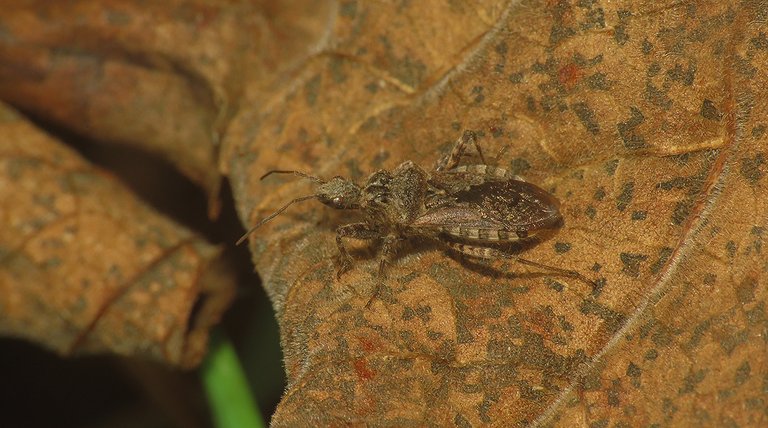
... were well-camouflaged. Which means, mostly brown ...
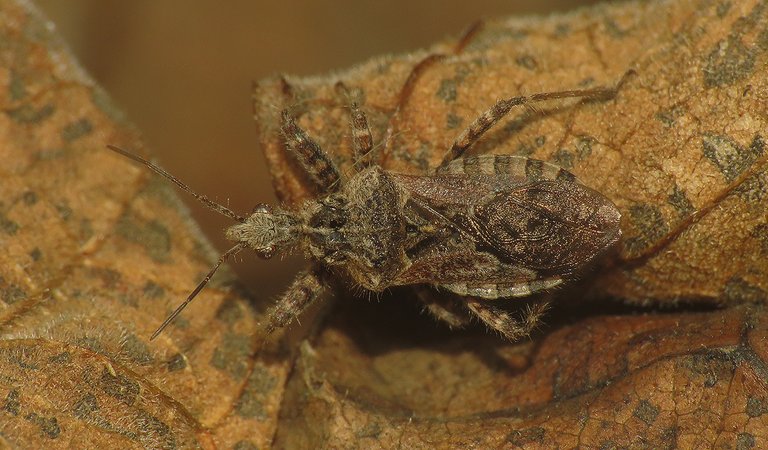
... like this bug from the Reduviidae family.
The name of the species is Coranus griseus. Just like the spider shown earlier, this is a predator that hunts other insects that have found their autumnal living space in the leaf litter under the fig tree.
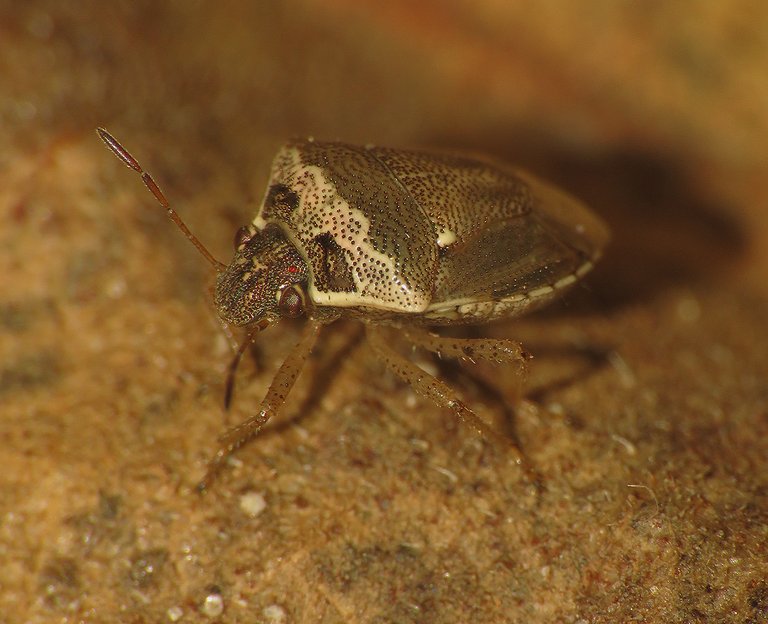
This bug belongs to the Pentatomidae family.
The name of the species is Eysarcoris ventralis.

All the Eysarcoris ventralis I found on the 28 of October were hidden under the fallen foliage.
I became aware of their presence only once I started overturning the leaves.
Here you can see one peeking from the shelter provided by the folding of the dry leaf.
Since these bugs were quite numerous, I took quite a few Eysarcoris ventralis portraits that October day.
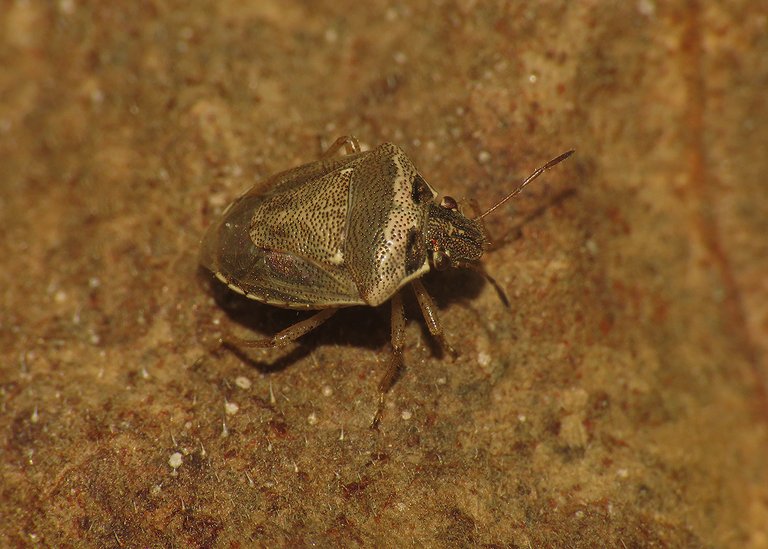
At one point, while I was photographing yet another Eysarcoris ventralis bug ...
... a jumping spider entered the frame.

It was a small, juvenille Evarcha jucunda spider.
It was just a very short moment, nothing really happened, but the insect and the spider looked very cool next to each other in this series of photographs.
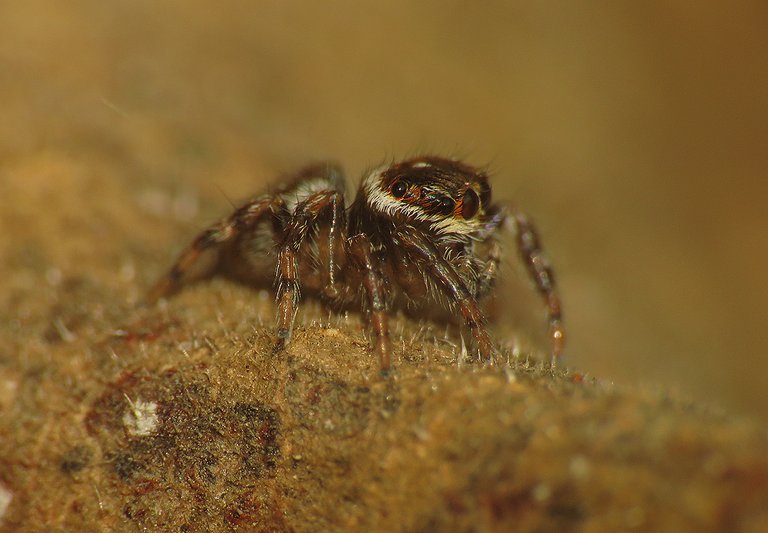
Evarcha jucunda is posing alone in this shot.
A couple of jumps later ...

... the spider was far away. Well, relatively far away.
The tiny arachnid shown in this set of four photographs is a mite.
I'm pretty sure that it belongs to the Trombidiidae family but, becouse of quite a few similar-looking velvet mites around, I can't tell you what species exactly this is. It could be the Trombidium holosericeum. Or some Allothrombium species. Or something else.
The mite shown in this and the previous four photographs was hidden in one of the foldings of the dry, shriveled leaf. A bit later ...
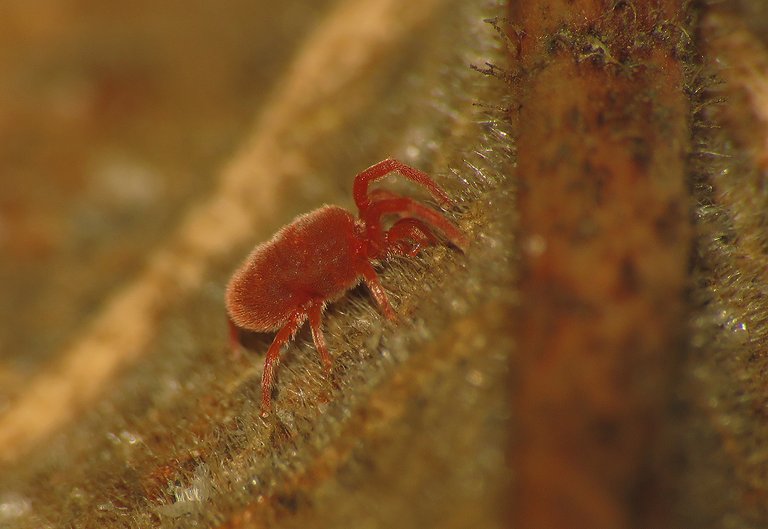
.... I came across another red velvet mite that looked exactly like the previous one so I suppose is the same species.
This one was actively exploring the upper surface of the leaf. In the following photograph ...
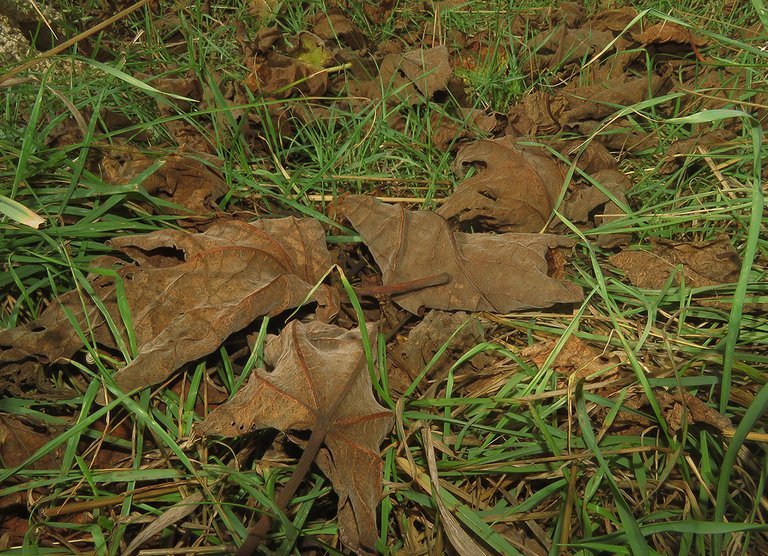
... you can take a look at the brown leaves scattered across the fresh green grass. In summer, the leaves are green and attached to the tree while the grass below is dry and yellow or brown.
In this wide, enlargeable shot, you can take a good look at the setting. You can see the wall of an abandoned building, the branches of the fig still decorated with sparse green foliage, and the overall bright atmosphere of a sunny October day in Marlera. In the following photograph ...
... the focus is on the green foliage on the upper branches. All these leaves ...

... will soon end up on the ground like the ones shown in this shot. And now, after a quick break from the macro view ...
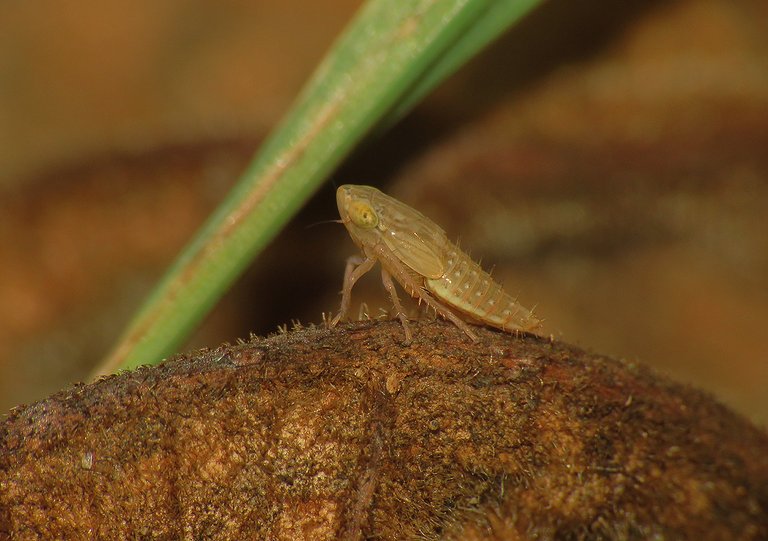
... is time to resume the virtual tour through the leaf litter.

In this, the previous, and the following photograph ...
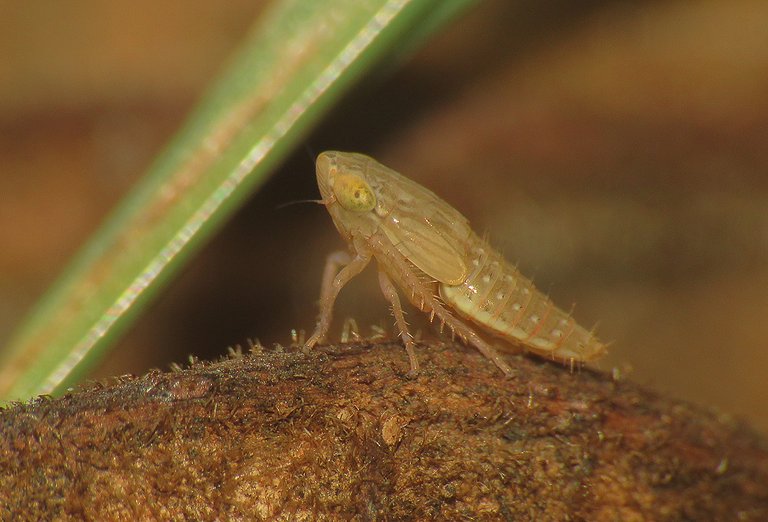
... you can see a leafhopper nymph. In this case, I can't tell you the name of the species. Quite a few leafhoppers look more or less like this before reaching adulthood. The family is Cicadellidae, that's something I'm sure of.
At one point, I saw an earwig nymph running across one of the leaves. I was able to take only one shot before the insect disappeared deeper into the leaf litter, and even that was a bit of a miracle becouse the young earwig was running damn fast. The name of this species is Forficula auricularia.
Do you remember the green spider from the beginning of the post? Well, here you can see another adult female of the same species. A bit of green grass mixed with the brown of the fallen leaves makes the spider much harder to notice.
The following photograph ...

... shows another Micrommata ligurina spider.
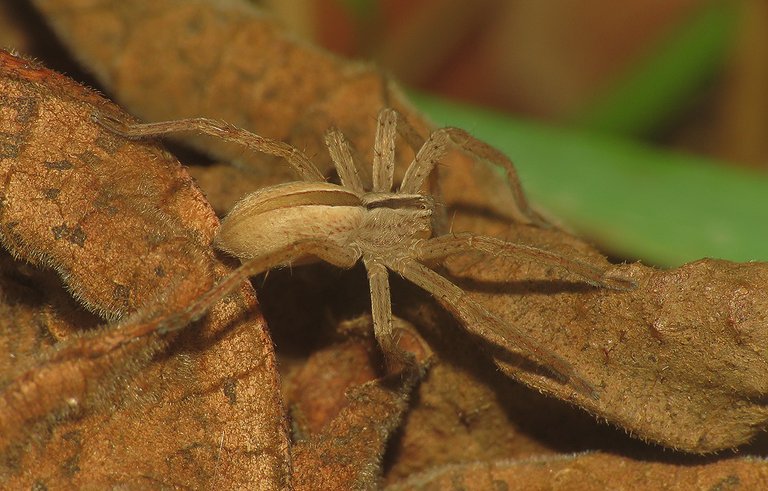
This one is well camouflaged on the brown surface. Just like the green spider shown earlier, this is also a female. But it's a juvenile female.

At this stage of their life, the Micrommata ligurina spiders are completely brown.
After photographing the two versions of the Micrommata ligurina female ...
... I noticed an Eysarcoris ventralis resting on the upper surface of the leaf. This bug was calm and quiet in a sunny spot so I was able to take a good portrait by combining the ambient light with the flash of my camera. All the previous photographs that show this species were taken in the shade, which means in low light conditions that led to rougher, less aesthetically pleasing results.
Here you can see another bug of the same species posing on the grass above the fallen leaves. At one point, while I was observing the bug through the macro lens ...
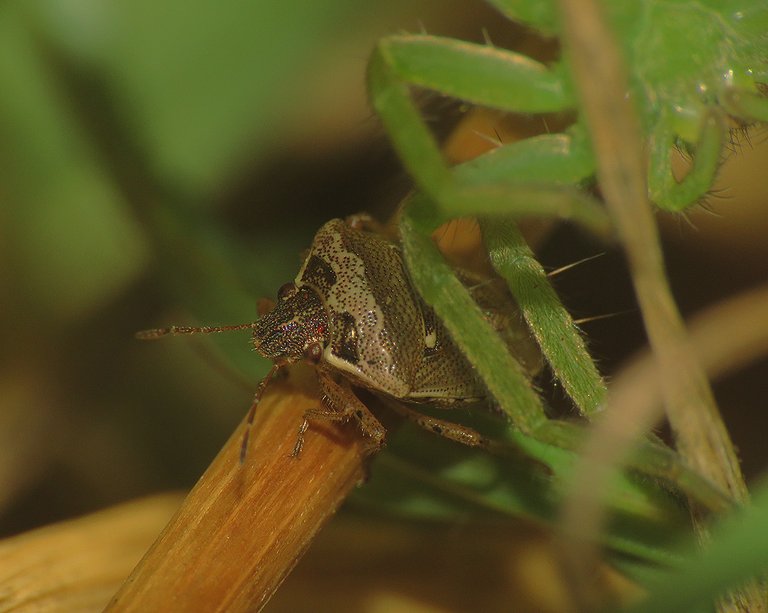
... the green spider shown earlier entered the frame for a second or two. It didn't attack the bug.
Here you can see a Chorthippus biguttulus grasshopper sunbathing on the upper surface of a fallen leaf that isn't completely brown and shriveled. In the following two photographs ...

... another grasshopper of the same kind...
... is posing on the brown leaf.
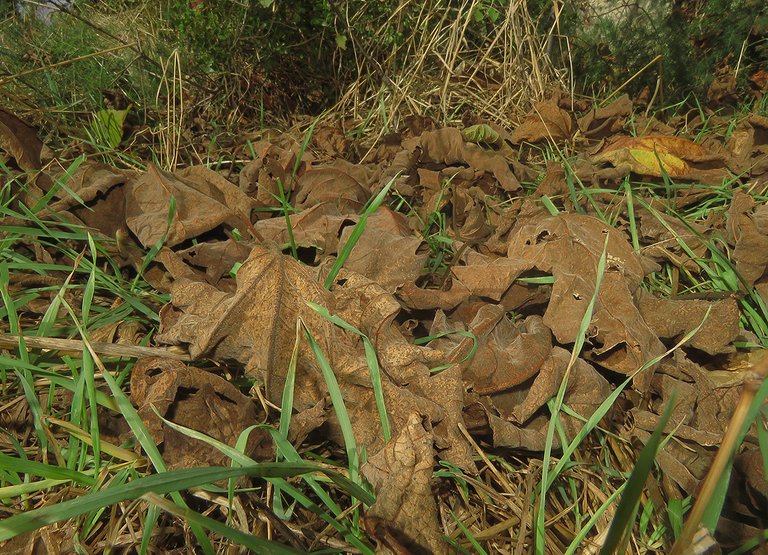
In this wide shot, you can take another look at the leaf litter. Quite a few of the small arthropods shown in today's post will overwinter hidden in this relatively warm and safe space provided by the life cycles of the fig tree.
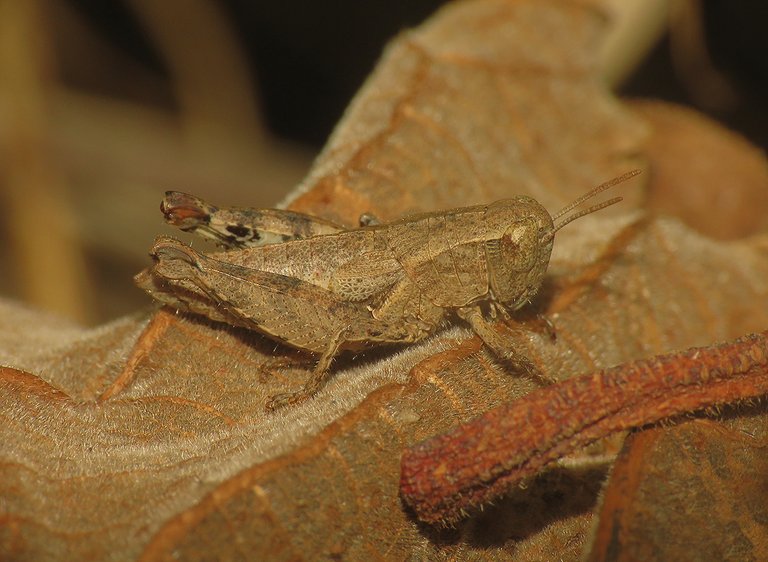
Pezotettix giornae is a grasshopper that appears in almost every episode of this series.
This species is very hard to notice on the brown leaves.
A very successful mimicry is always fun to observe and photograph.
Here you can see the Aiolopus strepens grasshopper. The photograph on the left was taken with the little help of my camera's flash. The right one was shot in ambient light.
With many spiders and insects in it, the leaf litter is a good hunting ground for small lizards.
This is the Podarcis siculus, a lizard from the Lacertidae family.
The fallen leaves provide plenty of prey and a good hiding place for these reptiles. I saw three of them on the 28 of October.
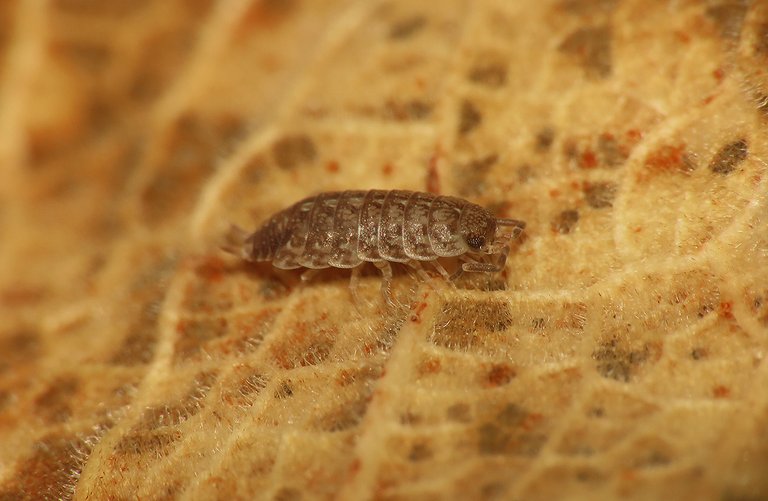
I found this small woodlouse only after removing a couple of leaves. They prefer humid shady places on a sunny day like the one shown in this post. The name of the species is Philoscia muscorum. The family is Philosciidae.
This simple GIF was created with two consecutive shots. I made the thing to have some fun after the fairly tedious preparation of many still photographs, and I included it to give a tiny bit of movement to the post.
You can see another small woodlouse in this shot. This is the Porcellionides pruinosus, a species from the Porcellionidae family.
This tiny wingless insect that resembles some kind of woodlouse is a mealybug.
I don't know what species this is but I can confidently tell you that it belongs to the Pseudococcidae family. The genus is probably Vryburgia.
Here you can see another predatory bug from the Reduviidae family.

This is a Rhynocoris rubricus nymph. In the following triptych...
... you can see yet another Micrommata ligurina female. The photograph in the middle was taken in ambient light, the other two were additionally lit with the outburst of artificial light provided by the small, built-in flash of my camera.
The brown spider, shown in the following photograph ...
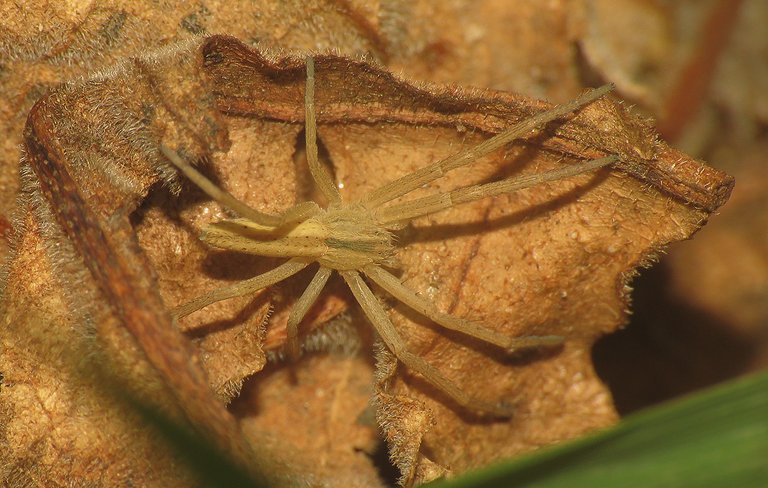
... is a Tibellus oblongus. Despite its appearance that resembles a juvenile Micrommata ligurina, this species belongs to the Philodromidae family.
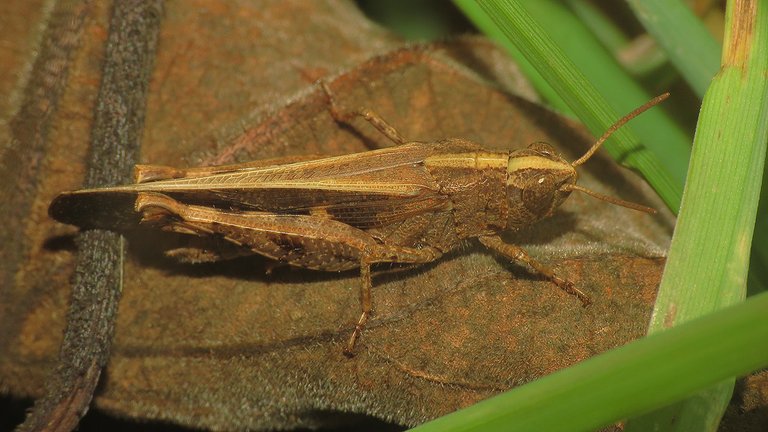
Here you can see another Aiolopus strepens grasshopper. Color and markings are pretty variable in this species.
AND THAT'S IT. HOPE YOU ENJOYED THIS FAIRLY LONG MACRO SAFARI AS MUCH AS I HAD FUN EXPLORING THE LEAF LITTER ON THE 28 OF OCTOBER.
WHEN IT COMES TO WRITING THE POST, WELL, THAT WAS MORE WORK THAN FUN. AS ALWAYS HERE ON HIVE, THE PHOTOGRAPHS ARE MY WORK.
The following links will take you to the sites with more information about some of the protagonists of this post. I found some stuff about them there.
https://en.wikipedia.org/wiki/Micrommata_ligurina
https://inaturalist.nz/taxa/327162-Coranus-griseus
https://www.inaturalist.org/taxa/141727-Eysarcoris-ventralis/browse_photos
https://en.wikipedia.org/wiki/Evarcha_jucunda
https://en.wikipedia.org/wiki/Trombidiidae
https://en.wikipedia.org/wiki/Trombidium_holosericeum
https://en.wikipedia.org/wiki/Forficula_auricularia
http://www.pyrgus.de/Chorthippus_biguttulus_en.html
https://en.wikipedia.org/wiki/Pezotettix_giornae
https://en.wikipedia.org/wiki/Aiolopus_strepens
https://en.wikipedia.org/wiki/Italian_wall_lizard
https://en.wikipedia.org/wiki/Philoscia_muscorum
https://bmig.org.uk/species/porcellionides-pruinosus
https://en.wikipedia.org/wiki/Mealybug
https://entnemdept.ufl.edu/creatures/ORN/MEALYBUG/vryburgia_trionymoides.htm
https://en.wikipedia.org/wiki/Rhynocoris_rubricus
https://en.wikipedia.org/wiki/Tibellus_oblongus

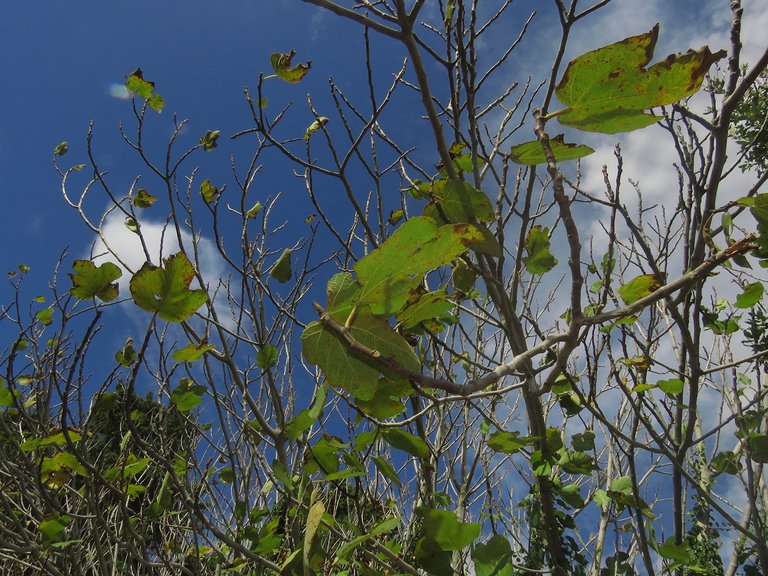
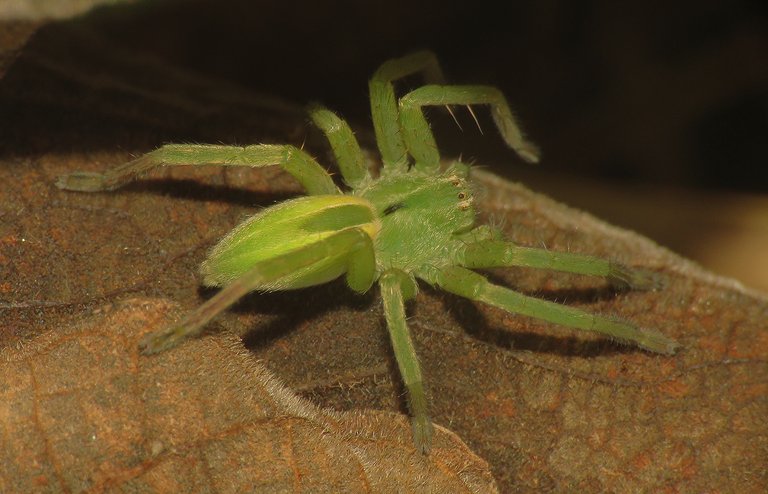
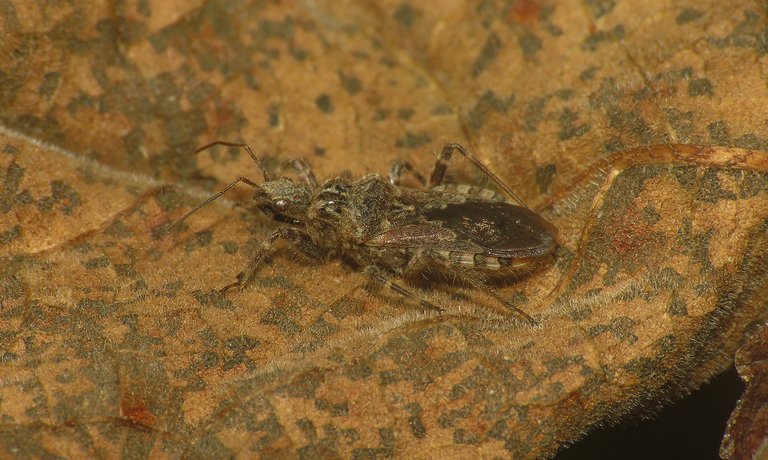
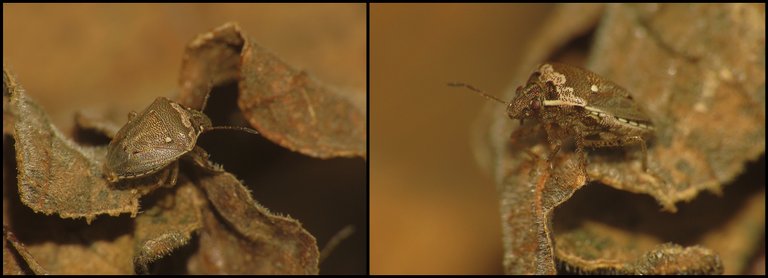
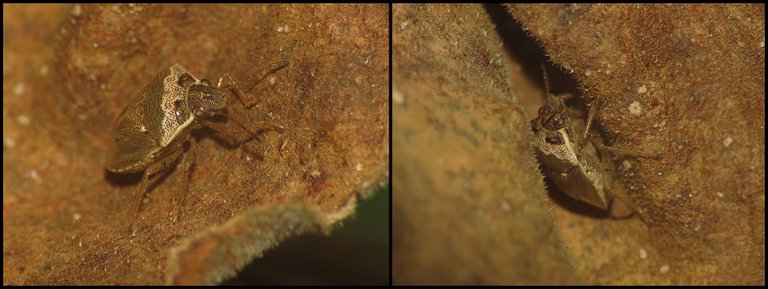

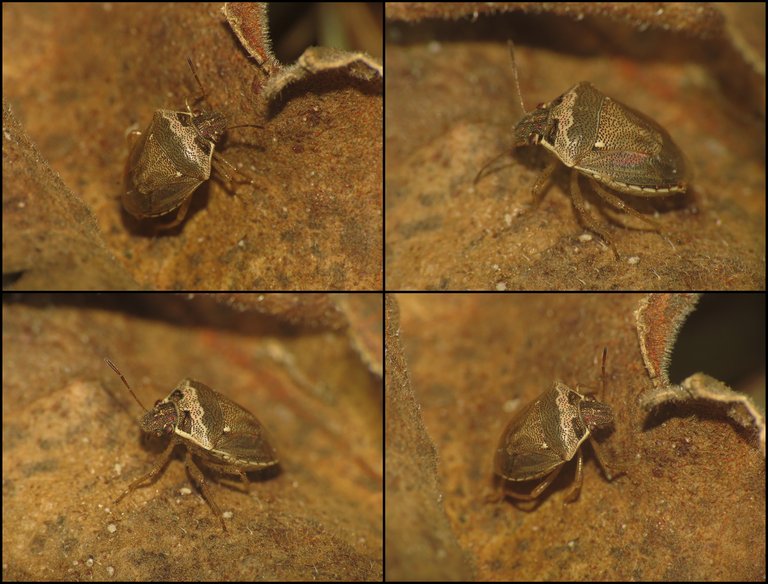

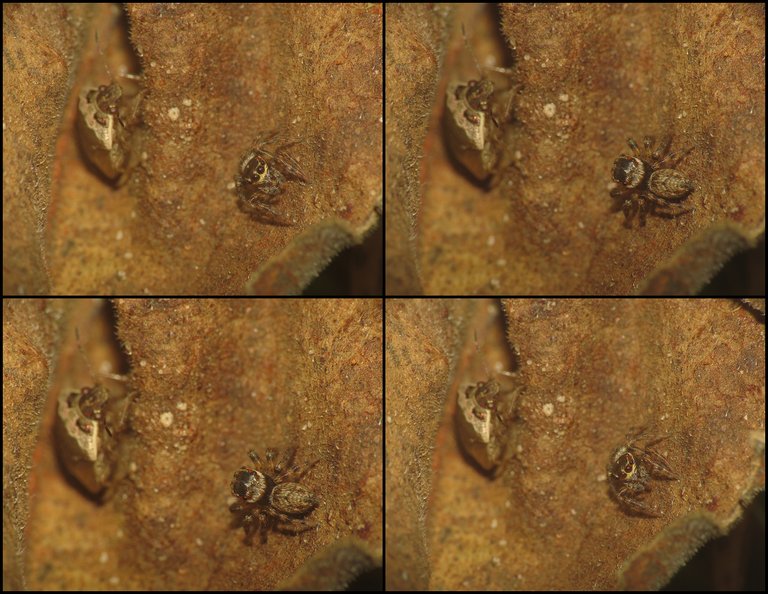
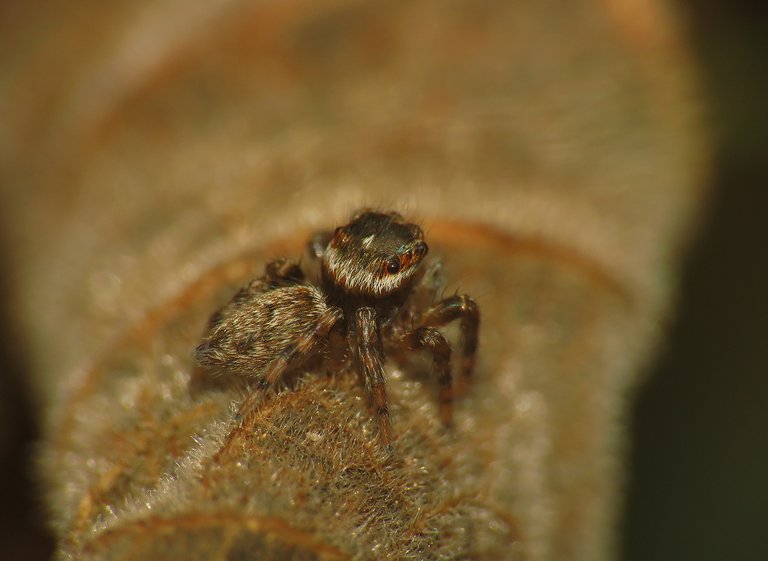

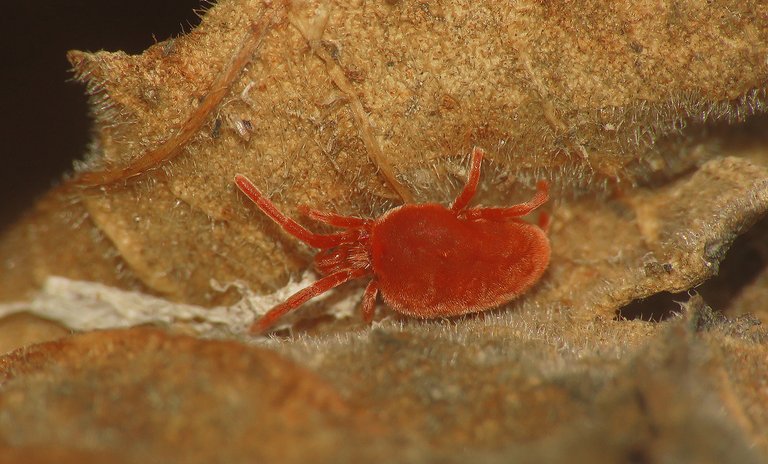

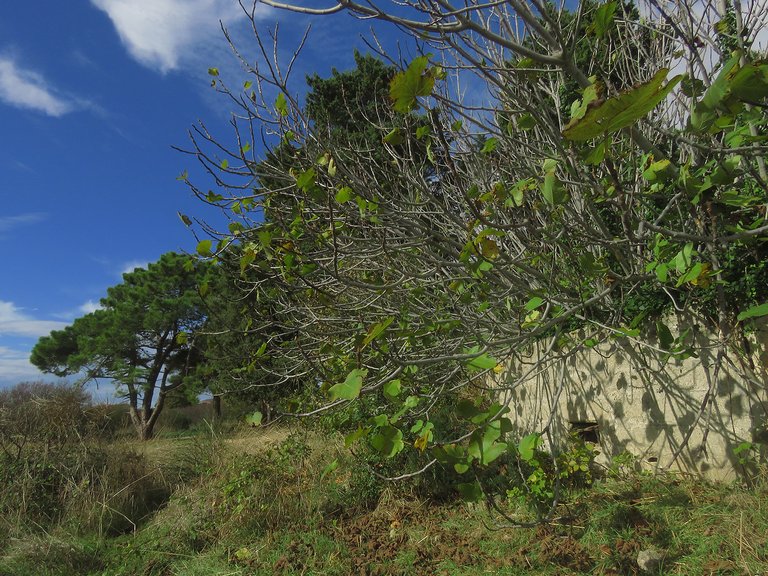



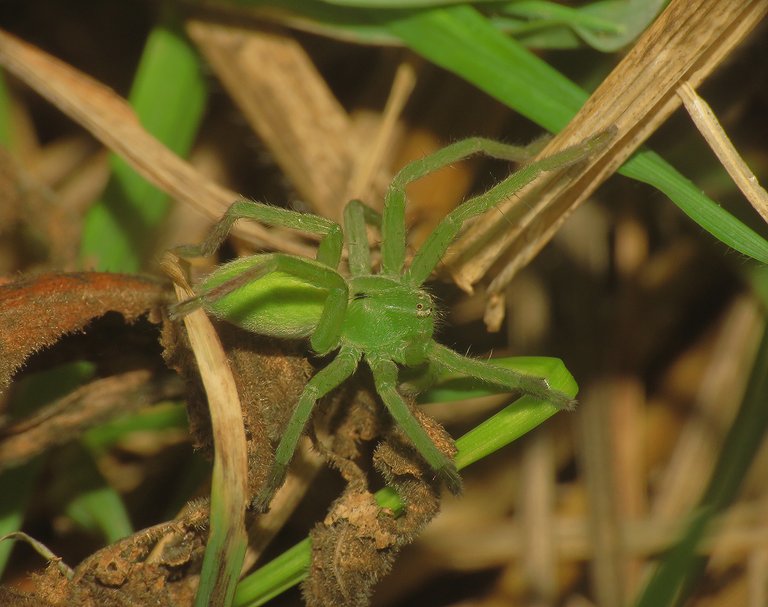

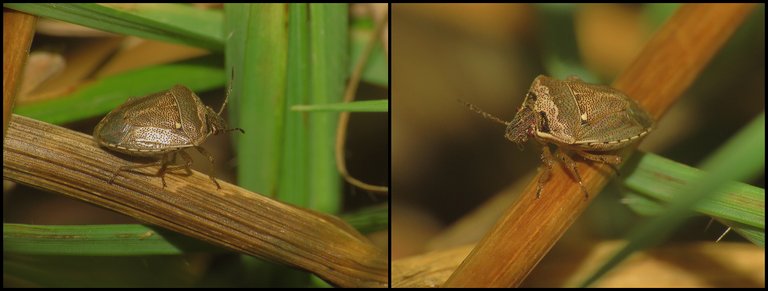
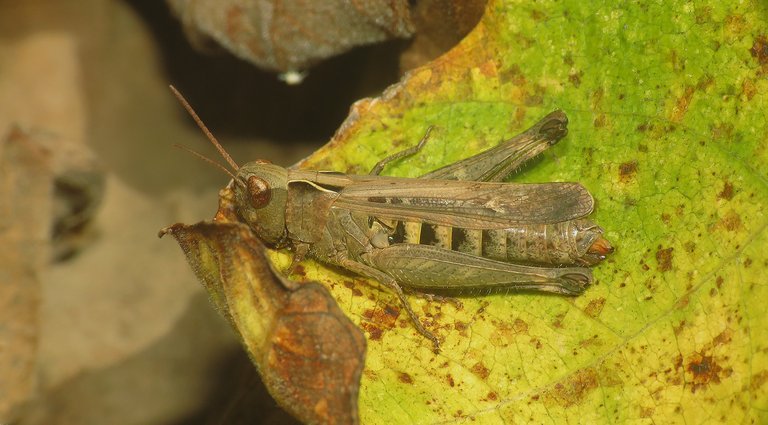
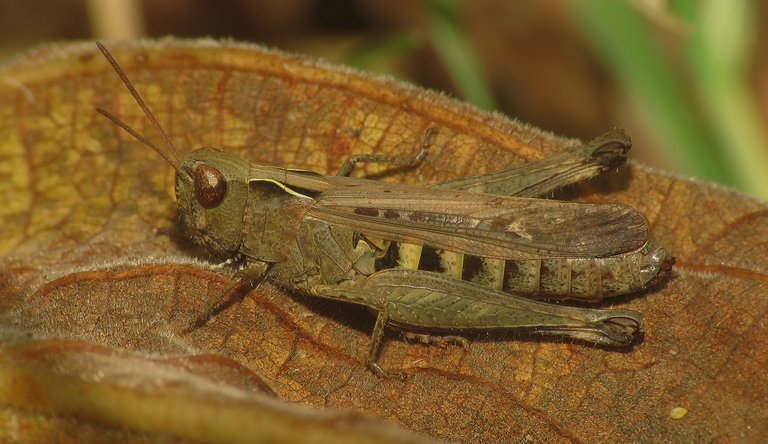
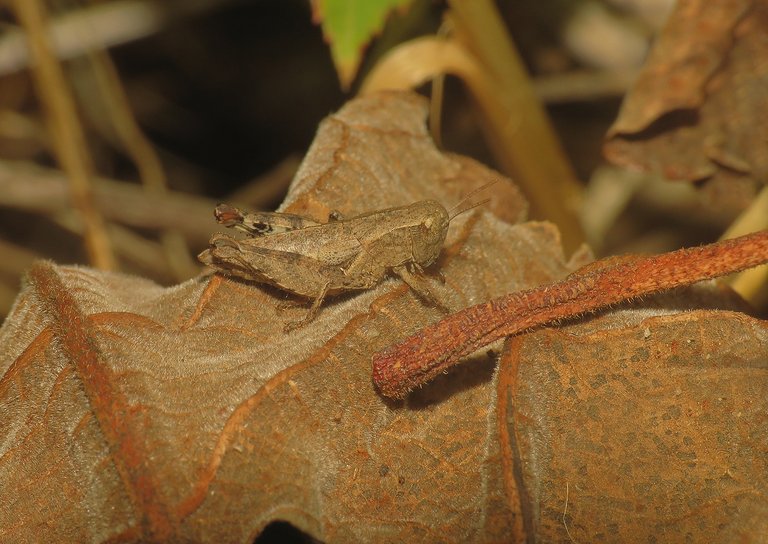
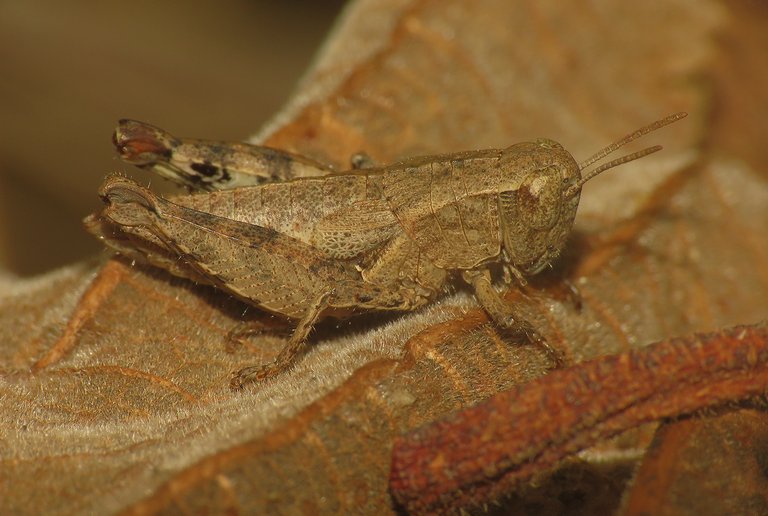


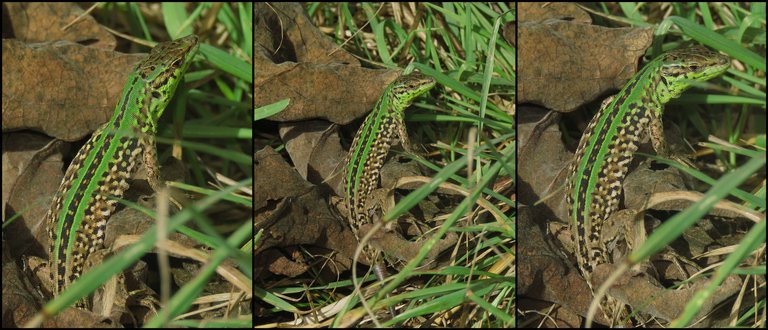



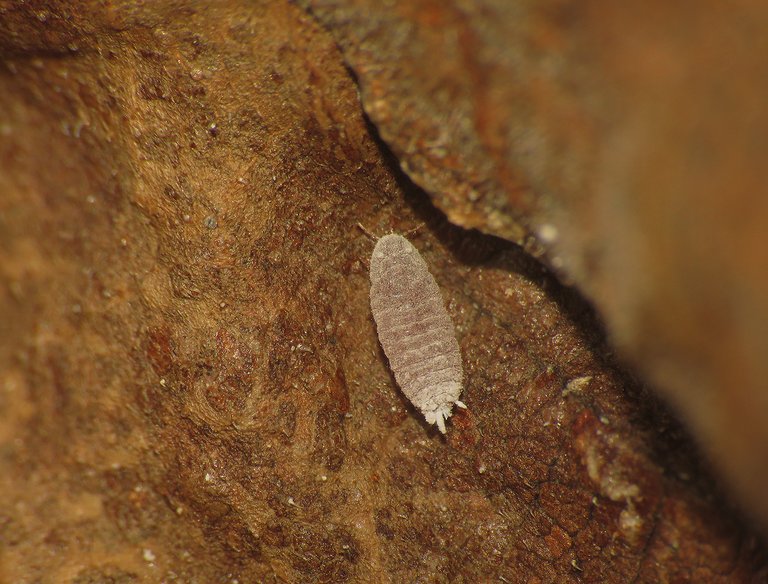



This post has been manually curated by @steemflow from Indiaunited community. Join us on our Discord Server.
Do you know that you can earn a passive income by delegating to @indiaunited. We share more than 100 % of the curation rewards with the delegators in the form of IUC tokens. HP delegators and IUC token holders also get upto 20% additional vote weight.
Here are some handy links for delegations: 100HP, 250HP, 500HP, 1000HP.
100% of the rewards from this comment goes to the curator for their manual curation efforts. Please encourage the curator @steemflow by upvoting this comment and support the community by voting the posts made by @indiaunited.
The insects are really incredible, they have a really surprising camouflage power, it's great that you were able to see them dear friend @borjan
The enormous amount of insects that you have been able to find in this small space of nature is impressive.
Beautiful photographs, I appreciate you sharing this experience.
have a beautiful morning
These are really amazing shots you put up there
Those are wonderful to look at. You have always shared some amazing insect photography. Really amazing
That tree and sky looks mind-blowing 😍
Love this view ... have a great week ahead 🙏
Thank you. 🙂 I whish a great week to you too.
https://twitter.com/LovingGirlHive/status/1729508884040028435
Always amazing to see your macro shots, they are a lot and all are very sharp.
Have to remember this trick whenever I go out hunting for macroworld, who knows what I can find in those underside of old foliage.
Yes, one can find some interesting creatures under the fallen leaves. 🙂
These insects are so cute, you took some nice shots there.
Oh! Wow! This is amazing to view. Especially the lizard, the skin colour is just almost the same with the grasses. So fine
I've never seen a green spider like that before - thats pretty cool !
Great pics as always !
wow, what a beautiful way to capture this little creature <3 I have fallen in love with them, specially with that little green spider, when i was reading your post, my wife was sitting with me, she said, this is not a spider :D i said this is a spider and then i let her read your text and then she got quite.
Want to Know more about Hivepakistan?
Ping Us On Hive Pakistan Discord server
To support HivePakistan, delegate Hive Power to hivepakistan and earn 90% curation reward :)
Here are some handy links for delegation
A delegation of 500 or more HP makes you earn Hivepakistan supporter badge.
I have seen more animals in your posts than I have seen in my entire life, lol
Funny but true
🦋🪰🪰🐌🐝🐝🐀🐀🦋🪰🐛😀😂😀😀🐝🪰🦋🦋🪳🕷️🪳🦂🦟🐜🦗🕷️🪲🐝🪲🐞🐞🦗🪳🪳🦂🦟🪰🐞🦗🪳🐌🪸🐚🐜🐜🦂🦟🪱🪰🐞🦗🪳🕷️🕷️🦋
Awww... The tiny red spider!... Like a lovely "alien", what a nice creature!... Amzing macro stuff as usual @borjan friend!
!discovery 33
!PIZZA
!VSC
@jlinaresp has sent VSC to @borjan
This post was rewarded with 0.1 VSC to support your work.
Join our photography communityVisual Shots
Check here to view or trade VSC Tokens
Be part of our Curation Trail
@jlinaresp ha enviado VSC a @borjan
Éste post fue recompensado con 0.1 VSC para apoyar tu trabajo.
Únete a nuestra comunidad de fotografía Visual Shots
Consulte aquí para ver o intercambiar VSC Tokens
Se parte de nuestro Trail de Curación
This post was shared and voted inside the discord by the curators team of discovery-it
Join our Community and follow our Curation Trail
Discovery-it is also a Witness, vote for us here
Delegate to us for passive income. Check our 80% fee-back Program
$PIZZA slices delivered:
@jlinaresp(2/10) tipped @borjan
https://twitter.com/jewellery_all/status/1729597659009196221
Yay! 🤗
Your content has been boosted with Ecency Points, by @borjan.
Use Ecency daily to boost your growth on platform!
Support Ecency
Vote for new Proposal
Delegate HP and earn more
In this series of posts I have noticed that in Marlena there is a great diversity of animals, this is just great. As always, I must start by applauding the quality of your photographs, it is worth looking at them several times because many details are observed. This time the photos I liked the most were the ones of the mites of the family Trombidiidae, especially because I know they are small and in the photos they look very well detailed. Thanks for sharing your photos and experiences @borjan, a hug.
Thank you. 🙂 Yes, Marlera is a place with many interesting wild plants and small arthropods. And the best thing of all - it isn't far from where I live, so I don't have to drive far to get some interesting themes and pictures for these posts about nature, which are the posts I enjoy creating the most. I don't mind driving far, quite the opposite - I love to drive and listen to the music in the car, but gas isn't free or cheap so ... 😃is great to have Marlera always at hand.
These days got cold again, so I'll have to wait until spring to enjoy another insect season.
Hugs and Greetings from Croatia.
Green Spiders and red mites ~ Mother Nature has the brightest pallet of contrasting natural colors.
Wonderful photo shots Borjan !VSC !ALIVE 👌
@fun.farms has sent VSC to @borjan
This post was rewarded with 0.1 VSC to support your work.
Join our photography communityVisual Shots
Check here to view or trade VSC Tokens
Be part of our Curation Trail
@fun.farms ha enviado VSC a @borjan
Éste post fue recompensado con 0.1 VSC para apoyar tu trabajo.
Únete a nuestra comunidad de fotografía Visual Shots
Consulte aquí para ver o intercambiar VSC Tokens
Se parte de nuestro Trail de Curación
@borjan! You Are Alive so I just staked 0.1 $ALIVE to your account on behalf of @ fun.farms. (6/10)
The tip has been paid for by the We Are Alive Tribe through the earnings on @alive.chat, feel free to swing by our daily chat any time you want, plus you can win Hive Power (2x 50 HP) and Alive Power (2x 500 AP) delegations (4 weeks), and Ecency Points (4x 50 EP), in our chat every day.

Yes 🙂 nature has many exciting colors and color combinations in store. From a certain perspective, everything looks like a work of art.
I was amazed on the green spider. Amazing captures as usual.
Yes 🙂 that vivid green is a catchy color.
The green in that spider and that lizard are so vivid! Thanks for making this super long detailed post. I was captivated!
Yes 🙂 that vivid green is a catchy color. And it looks great when combined with autumnal shades of brown.

Glad you liked the post ... or said in a more exuberant, colorful way ...
😃
I think you have an eagle eye easily spotting where the insects are.
🙂🦅😃
Lindos insectos..
Congratulations, your post has been upvoted by @dsc-r2cornell, which is the curating account for @R2cornell's Discord Community.
Honestly, that was a long list of insects out there. I'm back in biology class once again and I'm still learning.
The red velvet mite is very attractive because of its colour and very active too.
Thank you for sharing.
🙂

I myself went to some beautiful place three days ago and there I found many butterflies and also found such beautiful insects which I did not know much about before. After reading your posts I also many things have been known about him.
wow this is so cool some really amazing shots, and what I love the most is the green spider which looks very unique and interesting.
I only came to know about these insects after your post..!! Earlier I only thought of them as spiders and insects but after reading your post I realized that there are many types of spiders And there are many types of these insects, I also came to know after reading your post and in my view, that post is the best from which you get to know and learn something.
I'm very happy that my post had that effect on you. 🙂
Really it's true 🥰😋
Such great photos, the lizard is absolutely stunning in its colors. So many different spiders, fascinating!